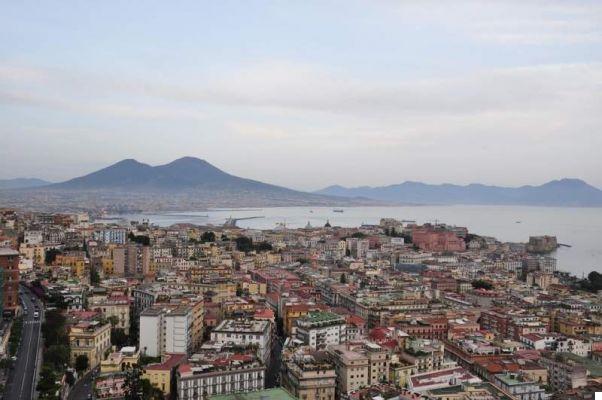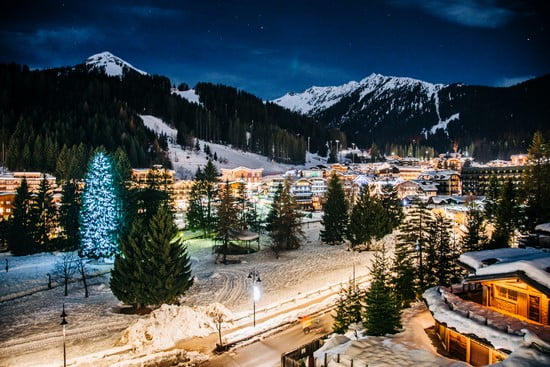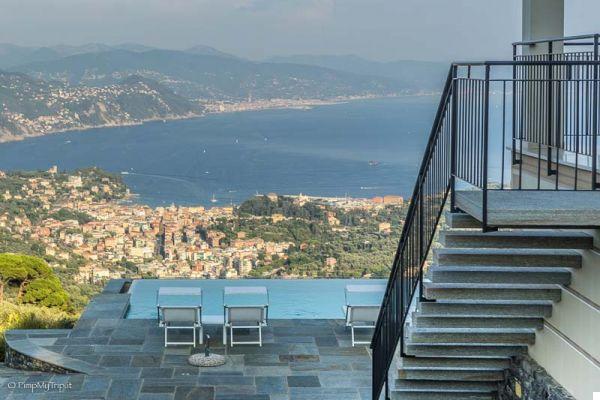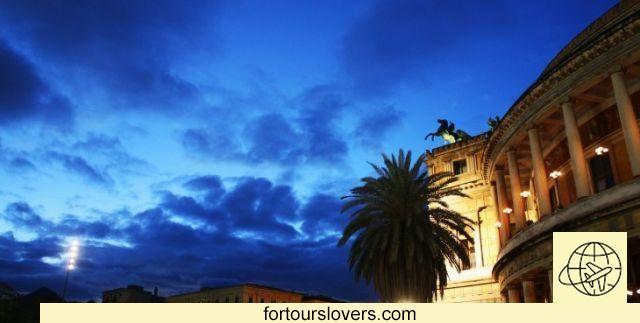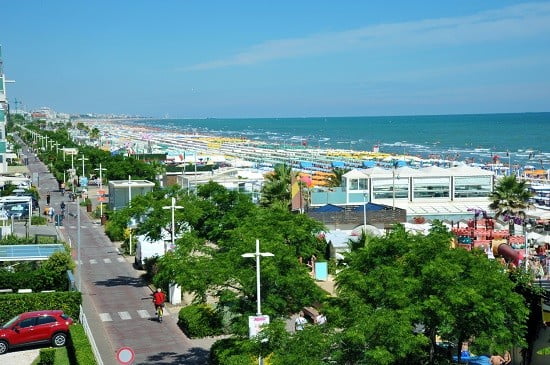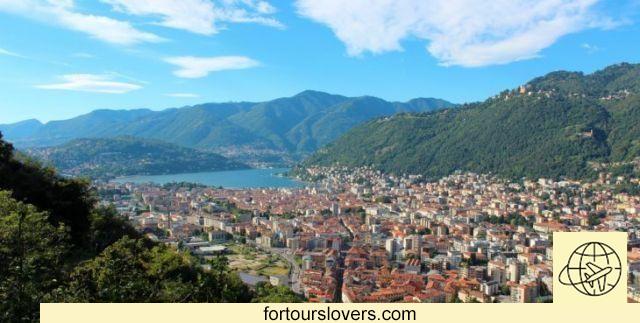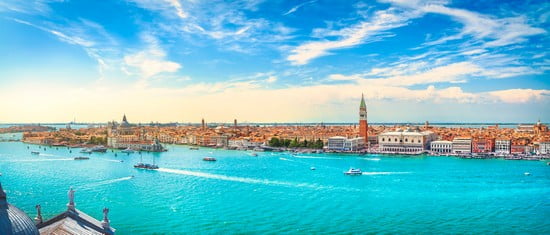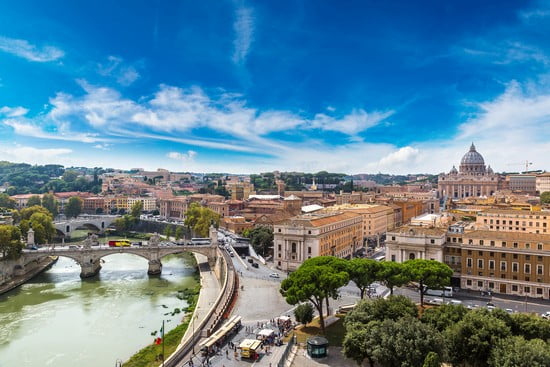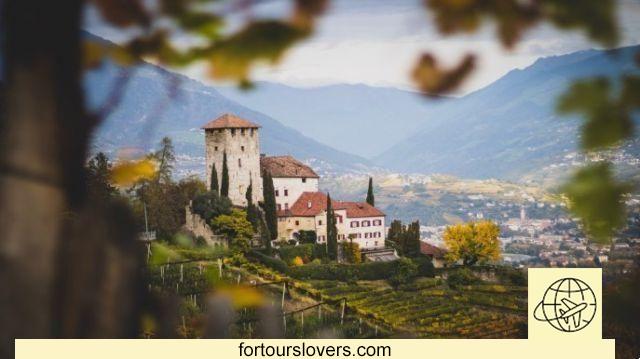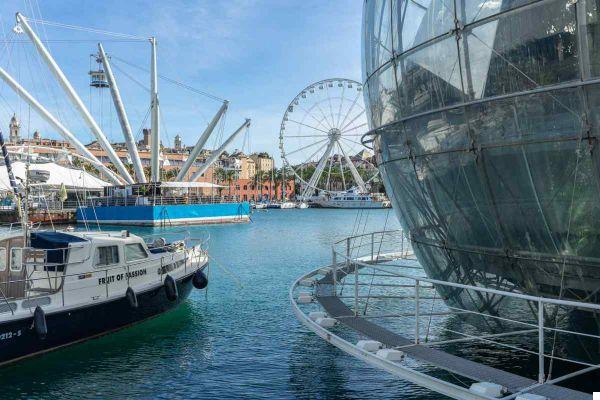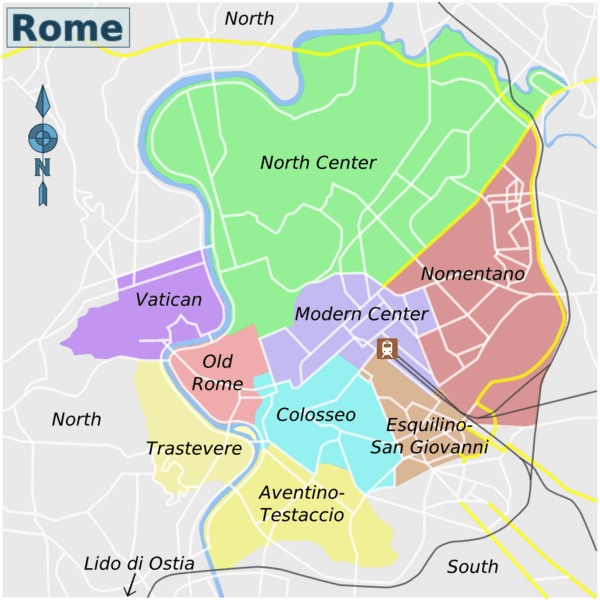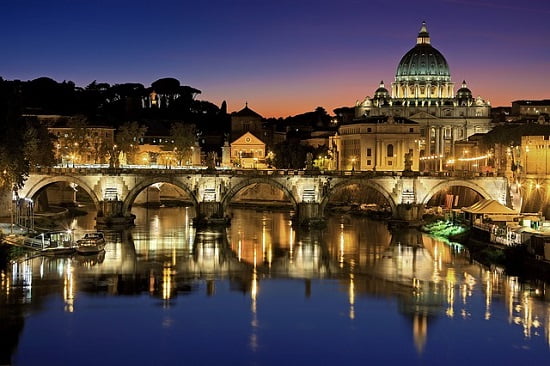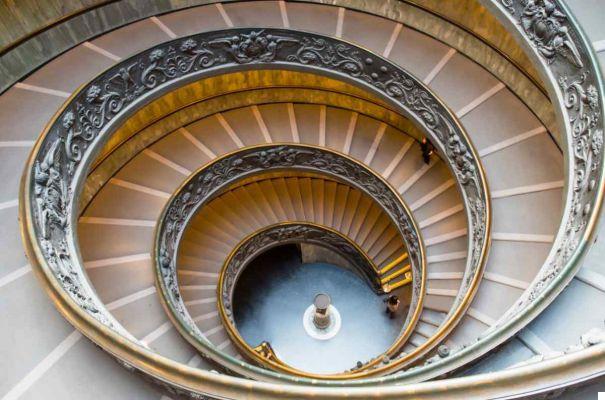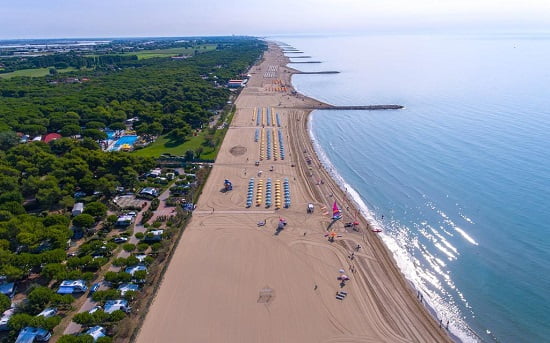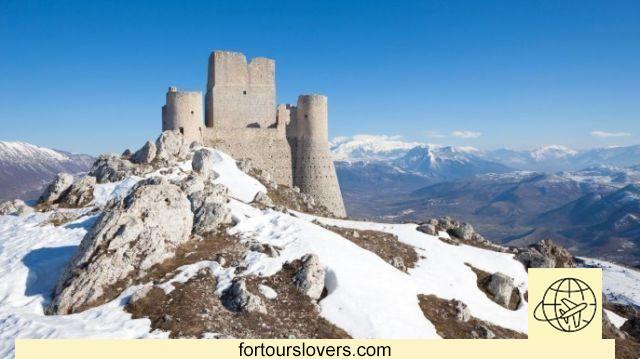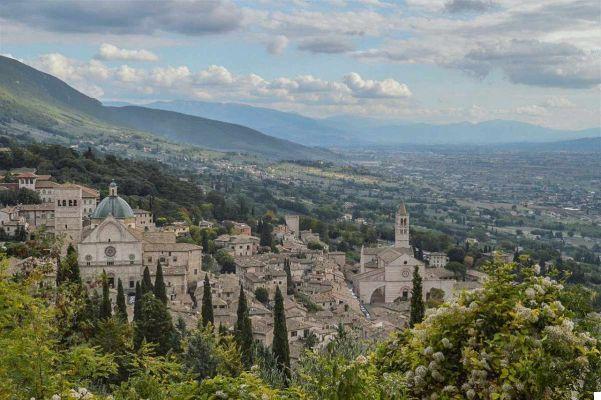Pompeii is a site of the UNESCO World Heritage Site and one of the most visited archaeological sites in Italy and around the world. The visit of this historical place is a journey into the past, during the time of the glorious Roman Empire.
Once a bustling port city, Pompeii's fate was marked byeruption of Vesuvius in 79 AD. Today Pompeii is an open-air museum with numerous details of its daily life ancient Roman city of 25.000 inhabitants where everything went out forever in the space of two days. An eternal silence that still captures the visitor almost 2.000 years later.
The visit to Pompeii offers aunique experience that you can't live anywhere else in the world. Its history, its destruction and the details of its conservation make the visit of this site an unmissable stop dune a trip to Campania.
History of Pompeii
Pompeii was a Roman city located in the Campania region. The origins of its foundation are not very clear, but the oldest finds on the site date back to the XNUMXth century BC
Thanks to its strategic position (the city was close to the coast before the explosion of Vesuvius) Pompeii became an important maritime commercial center, soon attracting the attention of Greeks and Etruscans first, and then of the Samnites, who fought for dominance in this 'area.
It was later conquered by the Romans and managed to fully enter the Roman economic circuit in the last quarter of the third century BC.
Between 62 and 70 AD strong earthquakes seriously damaged Pompeii. Current excavations of some buildings found empty reveal that after these earthquakes many people have decided to leave the city.
At the end of 79 AD Vesuvius erupted. The force of the blast wiped out the entire mountaintop, sending rocks, ash and dust over 10 miles into the sky. At its feet, the Roman city of Pompeii lived its last hours, covered by a shower of ash, poisonous gas and volcanic stones that in 18 hours buried one of the most prosperous cities in Campania under 5-6 meters of pyroclastic material.
Buried under volcanic sediments and not eroded by time, the city was forgotten for more than 1500 years. It was in the 17th century that it was rediscovered in an unprecedented state of conservation.
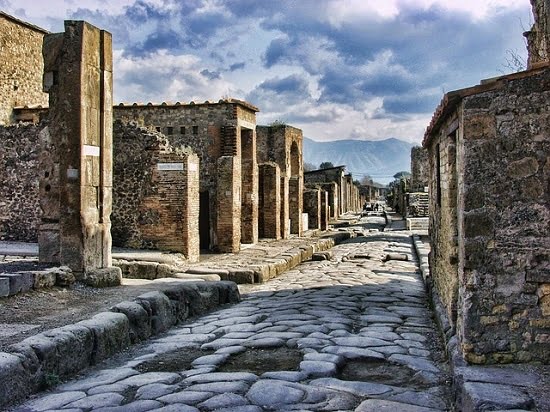
Visit Pompeii: what to see
The ash from Vesuvius had covered the city of Pompeii with a blanket, which later hardened. When organic materials, such as wood or citizens' bodies, decomposed they left gaps in the hardened ash. The empty spaces were filled with plaster. This technique is called "cast" and has allowed us to know many details about the life of Pompeii and its inhabitants.
Pompeii today boasts one of the most amazing and famous archaeological sites in the world! Visiting it and walking among ruins once full of life means rediscovering an ancient city frozen in time!
For the exceptional conservation of the buildings and its tragic history, Pompeii was declared a World Heritage Site by UNESCO in 1997.
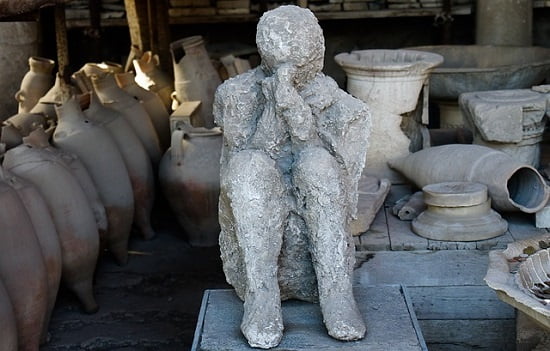
here are the most important places to see in Pompeii:
The hole - It is the main square and center of the political, religious and economic life of the city. It was reserved for pedestrians only and access to wagons was forbidden.
Temple of Jupiter - was dedicated to the three main divinities of the eternal city: Jupiter, Juno and Minerva. In the basement of the temple the sacred furnishings, the votive gifts of the faithful and the public treasure were kept.
The basilica of Pompeii - it was basically a kind of covered forum, dedicated to the administration of justice in Pompeii.
The temple of Apollo - In front of the basilica is the temple of Apollo, god of the sun. This was the most important religious building in Pompeii. Do not miss the statues of Apollo and Diana. Many of the statues found near the temple are visible in the National Archaeological Museum of Naples.
The Lupanar - Perhaps the most curious place in Pompeii. The Lupanar was the brothel of the city, proof of this are the erotic frescoes on the walls and the engravings on the doors where you could read the names of the women who worked here. It consisted of 2 floors: the ground floor, dedicated to less well-off customers, and the upper floor, dedicated to wealthier customers, which had a separate entrance and was much more elegant.
The big and the small theater - Pompeii had two theaters dedicated to free time, one with 5000 seats called the large theater and a covered theater with about 1000 seats called the small theater.
Garden of the Fugitives - One of the most impressive visits. This is where the petrified bodies of 13 people who tried to escape the fury of the volcano are found.
Faun's house - This is one of the most luxurious buildings in the city. It is a huge residence with several decorated and well-preserved rooms. It owes its name to a fountain with a small statue of a dancing Faun that stands on the property.
The house of the tragic poet - It is a small to medium sized house, but with very elegant decorations. It is famous for its elaborate mosaic floors and frescoes depicting scenes from Greek mythology. The entrance floor is decorated with a mosaic depicting a domestic dog on a leash. Below the picture is written: Cave Canem, watch out for the dog.
The Baths of the Forum and Stabiane - These hot springs date back to the XNUMXth century BC and are the oldest in the city. They were divided into two areas: female and male, there were several swimming pools and had a heating system. Of great value are the decorations still visible in part.
The necropolis - Each gateway to the city had a necropolis. In Pompeii, currently, two have remained in good condition: the necropolis of Porta Ercolano and Porta Nocera. The first has the most beautiful funerary monuments and the second has the largest and most eye-catching mausoleums.
The Amphitheater - It is located at the end of the Via dell'Abbondanza and its construction dates back to 80 BC, so it appears to be the oldest Roman amphitheater in the world. Shows, gladiator fights and impressive games were held here.
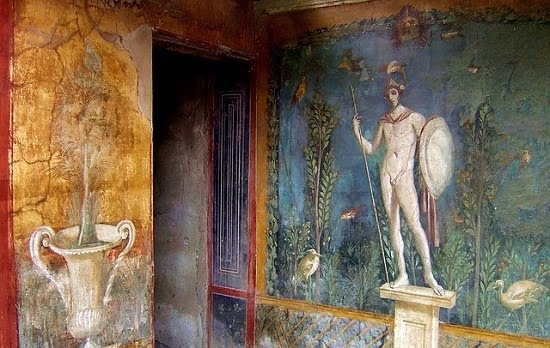
Pompeii ticket prices
Il cost of the ticket to visit the Ruins of Pompeii is 15 euros, while the cost of the reduced admission ticket is 7,5 euros.
Il reduced ticket it can be obtained by citizens of the European Union between the ages of 18 and 25 or by European teachers.
THEadmission is free for children under 18, for the disabled and their carers.
You can also buy a single ticket for the excavations of Pompeii, Oplonti and Boscoreale (valid for 3 days). The cost of the normal ticket is 18 euros, while the cost of the reduced ticket is 10 euros
Where to buy tickets to visit Pompeii
Tickets can be purchased directly on site or online, on the official website.
Those who buy tickets on the spot must be careful. Especially at the train station there are several people who try to sell you entrance tickets but they are not authorized sellers. In the best case they will sell you the ticket at a higher price, in the worst case they will sell you a used or invalid ticket.
We advise you to buy your ticket in advance, especially in high season when the lines are very long.
You can choose to book your skip-the-line ticket online, which also includes an audio guide. Or you can opt for a guided tour where an archaeologist will accompany you and explain each monument and wreck to you.
Book your ticket to visit Pompeii here
business hours
- From April 1st to October 31st: 9:00 - 19:30 (Saturday and Sunday opening at 08:30).
- From November 1st to March 31st: 9:00 - 17:00 (Saturday and Sunday opening at 08:30).
How to get to Pompeii
How to get to Pompeii from Naples
To get to Pompeii from NAPLES, you can take the Circumvesuviano train that allows you to reach by train all the places involved in the archaeological excavations. It starts from Naples central station in Piazza Garibaldi and descends at Pompei Scavi - Villa dei Misteri station. From here you walk to reach Porta Marina, which is the main access to Pompeii.
You can also reach Pompeii by bus that leaves from the port of Naples, but the train is undoubtedly the best option.
How to get to Pompeii from Rome
Pompeii is located 240 km from Rome and there are several options for getting there.
- It's possible rent a car and take the A1 motorway. It will take about 3 hours to arrive.
- You can get to Naples by bus and from there you can reach Pompeii by train.
- Another option is to make the entire journey by train. To do this, take a train at Rome Termini station to go to Naples. Once in Naples, you need to follow the above steps and take the Circumvesuviana train line to the central station. The train leaves every half hour and takes about another half hour to arrive.
Advice on how to visit Pompeii
The current site is vast! Your itinerary will be well planned if you visit Pompeii with a tour guide who, in addition to planning the best things to see according to your available time, will be able to provide you with many explanations to better understand what you visit.
To see Pompeii it could take a whole day. If you don't have much time, you can devote no less than 2-3 hours to the main attractions.
Like most towns built in Roman times, Pompeii is well organized with a clear street plan, but the signage is rather poor and there are few explanations on the site. Don't forget to ask for a map at the information booth.
The site offers little shade, so it is recommended that you bring hats, sunglasses and sunscreen regardless of the season. It is also recommended to wear comfortable shoes for the visit.
There are bars, ice cream / drink stalls, and souvenir shops outside the ruins, but there is also a coffee shop offering sandwiches and snacks within the site. There are toilets and in the fountains scattered throughout the site you can fill up your water bottles.
You can also visit Herculaneum, a few stops along the Circumvesuviana railway line from Pompeii and easily reachable from Naples or Sorrento. Herculaneum was also destroyed when Vesuvius erupted, but it is a much quieter site than Pompeii and much better preserved. Several buildings still have their upper floors intact.
Where to sleep to visit Pompeii
The best choices where to stay to visit the Pompeii Archaeological Park are in one of the many hotels in Pompeii, or in nearby tourist resorts. Pompeii offers over 300 accommodation facilities, many of which are bed and breakfasts, hotels, tourist apartments and holiday homes.
Find a hotel in Pompeii
The two best places to stay near Pompeii to easily visit Pompeii are Naples and Sorrento. They offer many things to do, have a wide choice of accommodation and are also a great starting point for visiting the Amalfi Coast.
Find a hotel in Naples Find a hotel in Sorrento




